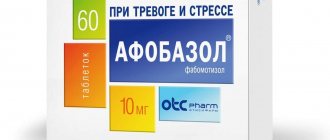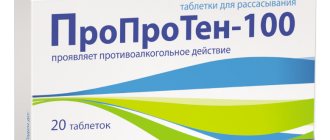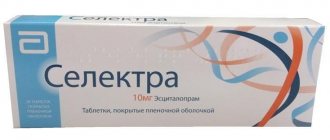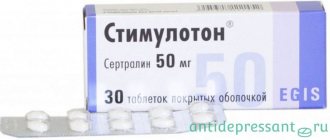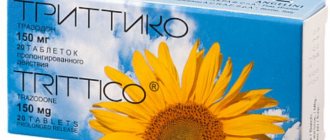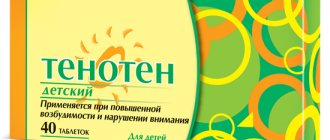Release form of the medicinal product and its composition
In what form can the medicine “Flogenzyme” be purchased at the pharmacy? The instructions for use state that the drug mentioned is available only in tablet form (each tablet is enteric-coated).
The effectiveness of this product is due to its composition. According to the instructions, the medicine "Phlogenzyme" contains such active ingredients as bromelain, rutin (or rutoside) and trypsin. In addition, the composition of the presented drug includes additional substances in the form of lactose monohydrate, corn starch, magnesium stearate, stearic acid, purified water, colloidal silicon dioxide and talc.
Phlogenzyme: composition and release form
The drug is available in the form of tablets that have a coating that easily dissolves in the intestines. Each Phlogenzyme tablet contains: - Active ingredients: trypsin (1440 units), bromelain (450 units), rutin (100 mg). - Excipients: corn starch (24 mg), lactose monohydrate (148.58 mg), magnesium stearate (12.72 mg), colloidal silicon dioxide (6.36 mg), talc (2.46 mg. ), stearic acid (11.28 mg.) and purified water (24 mg.). — Enteric coating: macrogol 6000 (0.67 mg), triethyl citrate (1.2 mg), copolymer of methacrylic acid and methyl methacrylate (1:1) in the amount of 11.89 mg. vanillin (0.15 mg.), talc (4.08 mg.).
Pharmacological properties of the drug
What properties does the medicine “Flogenzyme” have? The instructions for use contain a comprehensive answer to the question posed. It says that the mentioned remedy is a certain combination of enzymes (bromelain, trypsin and rutin). The first two substances contribute to the immediate breakdown of cellular fragments, as well as metabolic elements of the inflammatory process. As for the latter, it quickly restores and improves the permeability of vascular walls, which ultimately leads to a noticeable reduction in hematomas and edema.
So what is the medicine “Flogenzym” intended for? Its instructions indicate that it is capable of providing fibrinolytic, anti-inflammatory, antiplatelet, decongestant and immunomodulatory effects. In addition, this drug has a comprehensive effect on the pathophysiological and physiological processes occurring in the human body.
Basic properties of the drug
What properties does the drug “Flogenzyme” have? It improves the condition of vascular walls and also regulates the functioning of blood cells. The medication also reduces the risk of blood clots in blood vessels, blood viscosity and promotes the dissolution of existing clots.
Among other things, the presented product increases the delivery of nutrients and oxygen to organs, improves microcirculation in the area of chronic inflammation. Thanks to this, the drug stimulates reparative processes in the human body in the postoperative period and in chronic diseases. As a result of taking the medication, the patient’s swelling decreases, pain decreases, and hematomas resolve faster.
It should also be noted that the drug “Phlogenzyme” significantly improves blood supply to the lungs and bronchi in case of chronic pathologies of the upper respiratory tract, including those caused by long-term smoking. The drug quickly thins sputum, restores the drainage function of the bronchi and has a positive effect on the function of the ciliated epithelium. It should also be said that the mentioned drug can increase the effectiveness of antibiotic therapy.
Pharmacokinetics
A few words about how the medicine “Flogenzyme” is absorbed, analogues of which we will look at below. After oral administration, the active enzymes of the drug are absorbed from the small intestine. This occurs due to the resorption of intact molecules. By binding to blood proteins, they immediately enter the bloodstream. After this, the enzymes pass through the vascular bed and begin to accumulate in the area of the inflammatory process, regardless of its location in the human body.
Pharmacological properties of the drug Phlogenzyme
Phlogenzyme is a combination drug containing enzymes and rutoside (rutin). Bromelain and trypsin help accelerate the breakdown of metabolic products formed during the inflammatory process, and rutoside normalizes the permeability of the vascular wall, reducing swelling and accelerating the resorption of hematomas. Phlogenzyme reduces blood viscosity, preventing thrombus formation and improving microcirculation. Helps reduce pain. After oral administration, from 4 to 20% of the active components of the drug are absorbed in the small intestine, the rest takes part in the digestion process and is excreted in feces. Enzymes entering the systemic circulation bind to antiproteases - α2-macroglobulin, forming a complex of the active form of enzyme-α2-macroglobulin. The maximum concentration in the blood is reached 2 hours after oral administration and persists for 4 hours. The half-life is about 8 hours.
Indications for the use of anti-inflammatory drugs
What is the drug "Phlogenzym" used for? The instructions for use of the medication state that it is used for the prevention and complex therapy of the following disorders:
- In dentistry: prevents complications in the postoperative period with purulent-inflammatory diseases of the maxillofacial area and tooth extraction. The drug is also used for rehabilitation and restoration of the maxillofacial area after surgical interventions, improves the integration of implants and osteosynthesis.
- In surgery: used for postoperative recovery and rehabilitation of patients (improves reparative processes and regeneration). The medication is very often used for postoperative purulent-inflammatory complications, prevents the formation of a keloid scar and the development of adhesions, and also reduces the risk of thromboembolic complications during long-term immobilization.
- In pulmonology: used in the treatment of pneumonia and chronic obstructive pulmonary disease.
- In traumatology: used for bone fractures, damage to ligaments and tendons, bruises and hematomas of soft tissue, as well as sports injuries, burns, to improve the integration of endoprostheses and osteosynthesis.
- In neurology: multiple sclerosis and ischemic stroke.
- In angiology: thrombosis (acute) of deep veins, lymphatic edema, post-thrombotic disease, thrombophlebitis of superficial veins, microcirculation disorders, obliterating atherosclerosis of the arteries of the legs and other chronic angiopathy.
- In cardiology: coronary artery disease, preventive measures for angina attacks, reducing the risk of recurrent heart attacks and vascular accidents.
- In rheumatology: rheumatic soft tissue lesions, rheumatoid arthritis, reactive arthritis and ankylosing spondylitis.
- In urology: chronic and acute inflammation of the genitourinary system (used for cystitis, urethritis, cystopyelitis and prostatitis).
- In gastroenterology: used for hepatitis.
- In gynecology: chronic and acute inflammatory processes in the pelvic organs (with adnexitis and salpingo-oophoritis), as well as vascular pathologies of the menopause, reducing the severity and frequency of complications of hormonal replacement treatment.
Phlogenzyme tab.p.p.ksh.o.No. 200 1404
Latin name
Phlogenzym®
ATX:
L03AX Other immunostimulants
Compound
Enteric-coated tablets 1 table active ingredients: bromelain 450 units (FIP) trypsin 1440 units (FIP) (24 μkat) rutin (rutoside) 100 mg excipients: lactose monohydrate - 148.58 mg; corn starch—24 mg; Magnesium stearate—12.72 mg; stearic acid—11.28 mg; purified water—6.6 mg; colloidal silicon dioxide—6.36 mg; talc—2.46 mg shell: methacrylic acid and methyl methacrylate copolymer (1:1)—11.89 mg; macrogol 6000—0.67 mg; talc—4.08 mg; triethyl citrate—1.2 mg; vanillin—0.15 mg
pharmachologic effect
Pharmacological action - anti-inflammatory, immunomodulatory.
Directions for use and doses
Orally. Take at least 30 minutes before meals, without biting, with water (200 ml). After surgery, it is recommended to take the drug from the 2nd–3rd day. Treatment. The drug is taken after injuries and operations or acute inflammation to split and remove damaged tissue, resolve hematomas, improve tissue trophism and reparative processes, reduce inflammation and swelling, reduce the risk of complications - thrombosis, the development of adhesions, the formation of a keloid scar and wound suppuration: 3 each table 3 times a day for 2 weeks. If necessary, to improve recovery and healing, the course of taking the drug can be extended to 4 weeks or more, 2 tablets. 3 times a day. Prevention of complications. To prevent long-term consequences after surgery - thromboembolic complications, the development of adhesive disease of the abdominal cavity, trophic disorders during prolonged bed rest and immobilization of the patient: the drug is recommended to be taken over a long course in a dosage of 2 tablets. 3 times a day for 4 weeks or more or for the entire period of immobilization. Use with antibiotics. When prescribing antibiotics, the drug is used to increase the effectiveness of antibiotic therapy and reduce the undesirable effects of antibiotics. It is recommended to take the drug during the entire course of antibiotic therapy, 2 tablets. 3 times a day. Use with hormones. When prescribing long-term courses of hormones, it is recommended to take the drug to reduce the risk of complications (thrombosis) according to 2 tables. 3 times a day during the entire course of taking hormonal medications. When prescribing hormone replacement therapy to reduce the risk of thrombosis of the veins of the lower extremities, it is recommended to take 2 tablets. 3 times a day in repeated courses for 2 weeks with breaks of 3 weeks 3-4 times a year. Prevention. To prevent thrombosis of the veins of the lower extremities and reduce the risk of vascular accidents (heart attack), it is recommended to take the drug in 2 tablets. 3 times a day for a course of at least 3-4 weeks, repeating courses of taking the drug 3-4 times a year. Changing the course and dosage of the drug is recommended after consultation with a doctor.
Release form
Enteric-coated tablets: in PVC/aluminum foil blisters, 20 pcs.; in LDPE bottles of 800 pcs.; There are 2, 5 or 10 blisters in a cardboard pack.
Manufacturer
MUKOS Emulsions GmbH.D-13509, Miraustraße 17, Berlin, Germany. for MUKOS Pharma GmbH & Co., KG.D-13509, Miraustraße 17, Berlin
Conditions for dispensing from pharmacies
Over the counter.
Storage conditions
In a dry place, at a temperature of 15–25°C. Keep out of the reach of children.
Best before date
3 years. Do not use after the expiration date indicated on the package. 2000-2017. Register of Medicines of Russia
Indications
In complex therapy and prevention of the following diseases and conditions: surgery - postoperative recovery and rehabilitation of patients (improvement of reparative processes and regeneration), postoperative purulent-inflammatory complications, prevention of the development of adhesions and the formation of a keloid scar, reducing the risk of thromboembolic complications during prolonged immobilization; traumatology - bone fractures, damage to tendons and ligaments, bruises and hematomas of soft tissues, sports injuries, burns, improved integration of endoprostheses, osteosynthesis; angiology - acute deep vein thrombosis, thrombophlebitis of superficial veins, post-thrombotic disease, obliterating atherosclerosis of the arteries of the lower extremities and other chronic angiopathy, disorders microcirculation, lymphatic edema (lymphedema); urology - acute and chronic inflammation of the genitourinary tract (cystitis, urethritis, cystopyelitis, prostatitis); gynecology - acute and chronic inflammatory diseases of the pelvic organs (adnexitis, salpingoophoritis), vascular complications of the menopause, decreased frequency and severity of complications of hormone replacement therapy; cardiology - coronary artery disease, prevention of angina attacks, reducing the risk of vascular accidents and recurrent infarctions; gastroenterology - hepatitis; rheumatology - rheumatoid arthritis, ankylosing spondylitis, reactive arthritis, rheumatic soft tissue lesions; neurology - ischemic stroke, multiple sclerosis; pulmonology—pneumonia, chronic obstructive pulmonary disease; dentistry—prevention of complications in the postoperative period during tooth extraction, purulent-inflammatory diseases of the maxillofacial area, rehabilitation and recovery after surgical interventions in the maxillofacial area, improvement of implant integration, osteosynthesis.
Contraindications
individual intolerance to the components of the drug; congenital or acquired bleeding disorders; childhood. With caution: hemodialysis (after consultation with a doctor).
Use during pregnancy and breastfeeding
Take the drug with caution after consulting a doctor.
Description of the dosage form
The tablets are biconvex, round, coated with a smooth surface, greenish-yellow in color, and have a characteristic odor; Minor deviations from the uniformity of color are allowed: marbling of the pattern, dotted inclusions. The core of the tablet in the cross section is light yellow, lumpy, the shell is light yellow.
Pharmacodynamics
PHLOGENZYME is a new generation drug consisting of a combination of highly active proteolytic enzymes (enzymes) of plant and animal origin - bromelain and trypsin in combination with rutin. In combination, enzymes have a pleiotropic (multiple) effect, having a variety of pharmacological effects on pathophysiological and biochemical processes. The enzymes of the drug realize their therapeutic effects through anti-inflammatory, immunomodulatory, antiplatelet, fibrinolytic, thrombolytic, decongestant and secondary analgesic effects. Enteric-coated tablets of the drug pass transiently through the upper gastrointestinal tract without injuring the stomach and are absorbed in the small intestine by resorption of intact molecules (endocytosis, pinocytosis). The proteases of the drug, binding to the transport proteins of the blood (α-2-macroglobulin and α-1-antitrypsin), form a reversible protease-antiprotease complex, in which the antigenic determinants of the exogenous proteases of the drug are masked, which prevents allergic reactions. As a result of the formation of a complex with enzymes, the antiprotease (α-2-macroglobulin) transforms into an active form, which serves as an extracellular regulator of proinflammatory cytokines and growth factors, carrying out their transport, clearance and elimination. The formation of an active protease-antiprotease complex allows the safe movement of proteolytic enzymes throughout vascular bed to the source of inflammation and to the site of injury, regardless of the location in the body. The complex retains and slows down the excretion of proteolytic enzymes of the drug from the body, increases their circulation time in the vascular bed and, accordingly, the therapeutic effect. Once at the site of inflammation and wounds, proteolytic enzymes break down (hydrolyze) damaged proteins and tissues and eliminate (remove) cellular debris (detritus), helping to accelerate the cleansing and healing of the wound. The drug has a positive effect on the course of the inflammatory process, modulates the body’s defense reactions, which promotes physiological course of inflammation at different stages. The proteolytic enzymes of the drug accelerate the breakdown of inflammatory mediators, break down immune complexes and membrane deposits, increase the activity of phagocytes and natural killer cells, and stimulate interferonogenesis. Proteases of the drug reduce the level of pro-inflammatory cytokines (IL-1β, IL-6, IL-8, IFN-γ, TNF-α) and promote increased production of anti-inflammatory cytokines (including IL-4, IL-10), regulate the level Ig and blood antibodies. The enzymes of the drug limit the pathological manifestations of autoimmune and immune complex processes, restore the immunological reactivity of the body. The proteases of the drug reduce the level of transforming growth factor β, the increase of which leads to excessive scarring. Proteolytic enzymes have a regulatory effect on the synchronization of the formation of the basement membrane (laminin), modulation of the wound process and the expression of angiogenesis factors (vasculoendothelial growth factor, fibroblast growth factor and a number of other factors). Thus, the enzymes of the drug help improve reparative processes, prevent the formation of hypertrophic and keloid scars, and the development of adhesive disease after surgical interventions in the abdominal cavity. The enzymes of the drug break down and remove damaged tissue, accelerate the resorption of hematomas and edema by normalizing the permeability of the vascular walls, reducing the infiltration of the interstitium by plasma cells proteins, increasing the elimination of protein detritus and fibrin deposits, improving microcirculation and trophic processes in the damaged area. Optimization of the inflammatory process by proteolytic enzymes by reducing oncotic pressure and tissue edema, reducing pressure on nerve endings, eliminating ischemia and normalizing microcirculation, direct proteolysis of inflammatory mediators allows proteases to have a secondary analgesic effect. At the same time, proteolytic enzymes provide stimulation of healing and repair processes, reduce the risk of thromboembolic complications during prolonged immobilization, prevent the development of trophic disorders and purulent complications. The enzymes of the drug have a positive effect on improving microcirculation, increasing the delivery of oxygen and nutrients to the wound, reducing inflammation at the site of injury, maintaining physiological process of regeneration and acceleration of restoration of function of organs and tissues. The drug improves the rheological properties of blood (viscosity and fluidity) due to a positive effect on the functional state of blood cells and the vascular wall, plasticity (deformability) of red blood cells, stabilization of endothelial permeability, increased fibrinolytic activity of blood serum, reducing the density of adhesive molecules, reducing platelet aggregation (sticking together). Proteolytic enzymes reduce the number of activated forms of platelets (spheroechinocytes) and micro- and macroaggregates, i.e. reducing the risk of thrombus formation in blood vessels, and at the same time participate in the lysis of formed blood clots. Proteolytic enzymes reduce the level of atherogenic lipids, helping to increase HDL, reducing the risk of developing atherosclerosis and vascular disorders. The drug improves blood supply to the bronchi and lung tissue in chronic respiratory diseases, incl. caused by smoking, improves the viscosity properties of bronchial secretions, the function of the ciliated epithelium, restores the drainage function of the bronchi, thins sputum, which facilitates breathing and reduces cough. The proteolytic enzymes of the drug increase the effectiveness of antibiotics, while simultaneously reducing the undesirable effects of antibiotic therapy (dysbiosis, irritable bowel syndrome). Proteases improve the breakdown of substrates, optimize the balance of microbiota, and contribute to the restoration of intestinal endoecology.
Interaction
There were no cases of incompatibility with other drugs. The use of the drug together with antibiotics increases the effectiveness of antibiotic therapy. When used with hormones, the drug reduces the risk of blood clots.
Overdose
Cases of drug overdose are unknown.
special instructions
In case of infectious processes, PHLOGENZYM does not replace antibiotics. In case of exacerbation of the underlying disease when taking the drug, a temporary reduction in the dose of the drug or temporary discontinuation of the drug after consultation with a doctor is recommended. Patients suffering from diabetes mellitus should take into account that each tablet of the drug contains 0.015 XE. Effect on the ability to drive a car or perform work that requires increased speed of physical and mental reactions. The drug is not a dope and does not have a negative effect on driving a car or performing work that requires a high speed of mental and physical reactions.
Pharmacological groups
Anti-inflammatory, immunomodulatory agent [Enzymes and antienzymes] Anti-inflammatory, immunomodulatory agent [Other non-narcotic analgesics, including non-steroidal and other anti-inflammatory drugs] Anti-inflammatory, immunomodulatory agent [Other immunomodulators]
Side effects
The drug is well tolerated by patients. In some cases, there may be an increase in stool frequency, a change in the consistency and odor of the stool, which quickly resolves with a temporary reduction in the dosage of the drug. Occasionally, an allergic reaction (skin rash, itching) may occur, which disappears after reducing the dose or discontinuing the drug. If the conditions for using the drug are violated, nausea, bloating and abdominal pain, headache, dizziness, exanthema, general weakness, and a feeling of intestinal fullness may occur. These conditions disappear after reducing the dosage or temporarily discontinuing the drug.
Possible product names
- Phlogenzyme tab. By. solution/intestinal No. 200
- PHLOGENZYME TAB. P/OB. No. 200
- PHLOGENZYME TAB. P/OB. No. 200
Contraindications to the use of anti-inflammatory drugs
Under what conditions should you not take Phlogenzyme? Reviews from experts say that this drug has virtually no contraindications. However, according to the instructions, they still exist. Let's look at them right now:
- children's age (no studies on its use);
- acquired or congenital blood clotting pathologies, including hemophilia;
- individual intolerance to the drug.
It should also be noted that this drug should be used with extreme caution during hemodialysis.
Indications for use of the drug Phlogenzyme
Acute inflammatory processes, exacerbations of chronic inflammatory diseases; wounds, burns, injuries, including sports, post-traumatic and postoperative inflammation and swelling, lymphedema, lymphangitis, phlebitis, arteritis; rheumatic myositis, tennis elbow, tendinitis, inflammatory-dystrophic diseases of the joints in the acute phase, osteoarthritis; in combination with antibiotics and other drugs, the drug is used to treat infectious and inflammatory diseases of the oral cavity, paranasal sinuses, respiratory tract, genitourinary system, and digestive organs.
Medication "Flogenzyme": instructions for use
Analogs of this drug have the same properties as the original. However, they can be taken in completely different ways. In this regard, before using them, the patient should always consult a doctor.
How should I take Phlogenzyme medication correctly? Reviews from doctors and patients about this drug are mostly positive. According to them, this remedy quickly relieves inflammation and relieves pain.
The drug should be taken in tablets only orally half an hour before meals. It is recommended to take the medicine with 200 ml of plain water. After surgery, it is advisable to use the medication from the 2nd or 3rd day.
As mentioned above, the mentioned remedy is actively prescribed to patients after operations and injuries, as well as for acute inflammation. The drug breaks down and then removes damaged tissue, promotes the resorption of hematomas, improves reparative processes and tissue trophism, reduces swelling and inflammation, reduces the risk of complications such as thrombosis, the development of adhesions, wound suppuration and the formation of a keloid scar. To eliminate all of the above conditions, the patient is prescribed 3 tablets three times a day. They should be taken for two weeks.
If it is necessary to improve the recovery process and accelerate wound healing, therapy can be extended to 4 weeks or more. In this case, it is recommended to take 2 tablets three times a day.
Phlogenzyme and Transfer Factor
Phlogenzyme, whose average price is about 700 rubles for 40 tablets, is usually prescribed in a course that involves taking this drug in an amount of up to 180 tablets. Thus, the cost of treatment with Flogenzyme is approximately 3,000 rubles, and there are no guarantees that you will not have to take this drug again to achieve results. Transfer factor, in some ways, is a similar drug, since it is also an immunomodulator, although its effect on the body is incomparably deeper and more dramatic.
Transfer factor costs approximately 2,000 rubles per pack of 90 capsules, but unlike other immune drugs, it has no contraindications for use and does not cause any side effects. The drug has no age restrictions; it helps restore a weakened immune system by removing damage to the human DNA structure. Thus, both the cause of the disease is removed, and the human immune system receives new information on how to deal with all sorts of factors that try to harm human health.
Prevention of diseases, combined use with antibiotics and hormones
To prevent the occurrence of consequences after surgical interventions, the medication is prescribed in a long course in the amount of 2 tablets three times a day. The course of therapy must last for 28 days or more.
Very often, when prescribing antibiotics, the anti-inflammatory drug presented is used to increase the effectiveness of treatment and reduce negative consequences. The medication should be taken throughout therapy, 2 tablets three times a day.
If a doctor has prescribed a long course of hormonal treatment, then it is advisable to use the medicine “Phlogenzyme” to reduce the risk of developing thrombosis (2 tablets three times a day throughout the entire course of taking hormonal drugs). During replacement therapy to reduce the risk of thrombosis of the leg veins, this drug should be taken in the amount of two tablets 3 times a day, but in repeated courses of 2 weeks with breaks of 3 weeks (4 times a year).
As a preventative measure for vein thrombosis and reducing the risk of vascular accidents, the medication is recommended to take two tablets three times a day for a course of 3-4 weeks. It is advisable to repeat therapy 4 times a year.
The course and dosage of the drug should be changed only after consultation with a doctor.
Side effects
Does the medicine "Flogenzyme" have any side effects? Feedback from patients on this matter is scant. As for experts, they claim that this drug is tolerated quite well. Although in some cases patients may experience diarrhea and changes in the smell of stool. As a rule, such phenomena quickly stop after reducing the dose of the drug.
Rarely, patients experience allergic skin reactions that disappear immediately after stopping therapy. It should also be noted that some patients experience abdominal pain, flatulence, nausea, general weakness, headaches, exanthema and dizziness.
In addition, a temporary feeling of intestinal fullness may occur. To stop this feeling, the daily dose of the drug should be divided into a larger number of doses.
Special instructions for taking medication
The drug "Phlogenzyme" (its analogues have the same property) does not analgesize, but reduces swelling when inflammatory processes occur. Because of this, some people may experience pain symptoms for some time while taking the medication.
It should also be said that it is necessary to use the medication with extreme caution in case of diabetes mellitus, in patients with lactose intolerance, and also before surgery.
The drug "Flogenzyme" and alcohol are incompatible components. That is why during therapy you should completely stop drinking alcohol.
Drug analogues
Today, there are no structural analogues of the drug “Phlogenzyme” with the same active ingredients. And if you were unable to purchase the mentioned medication, you should immediately contact your doctor. The doctor is obliged to select a replacement medicine with similar properties (for example, Wobenzym, Serox, Serrata). Such medications may contain completely different active elements than Phlogenzyme, but have a similar effect.
Phlogenzyme: price and sale
For those who are wondering: “where to buy Flogenzyme,” there is a fairly simple answer - in any pharmacy. Phlogenzyme is a fairly well-known drug and can be purchased either at your nearest pharmacy or online. You should not take risks and prescribe this drug yourself. Although Flogenzym has received quite favorable reviews, all of the above side effects that this drug has require mandatory consultation with a doctor. Only an experienced doctor has the right to prescribe the necessary treatment, after first examining the patient’s condition and determining whether the patient should take Phlogenzyme tablets. There are also analogues of this drug, and one of them is the drug Transfer Factor.
